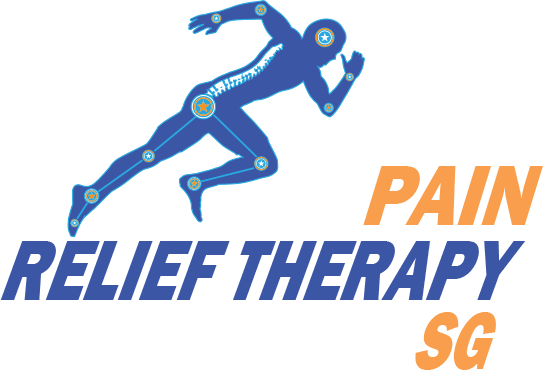TYPES OF PAIN
Although pain is generally not a pleasant experience, it serves as a vital communication tool for the body.
Without the sensation of pain, individuals would be unaware of harmful stimuli, such as a burn from touching a hot stove. Pain is, however, a complex phenomenon that involves both sensory and emotional components, and can result from a range of sources, including acute injuries and chronic illnesses.
Despite individual variability in pain perception, pain can be classified into distinct categories based on their distinguishing characteristics. An understanding of the different types of pain can aid in their identification and management.

There are several ways to categorize pain. One is to separate it into acute pain and chronic pain. Acute pain typically comes on suddenly and has a limited duration. It's frequently caused by damage to tissue such as bone, muscle, or organs, and the onset is often accompanied by anxiety or emotional distress.
Chronic pain lasts longer than acute pain and is generally somewhat resistant to medical treatment. It's usually associated with a long-term illness, such as osteoarthritis. In some cases, such as with fibromyalgia, it's one of the defining characteristics of the disease. Chronic pain can be the result of damaged tissue, but very often is attributable to nerve damage.
Both acute and chronic pain can be debilitating, and both can affect and be affected by a person's state of mind. But the nature of chronic pain -- the fact that it's ongoing and in some cases seems almost constant -- makes the person who has it more susceptible to psychological consequences such as depression and anxiety. At the same time, psychological distress can amplify the pain.
Pain is most often classified by the kind of damage that causes it. The two main categories are pain caused by tissue damage, also called nociceptive pain, and pain caused by nerve damage, also called neuropathic pain. A third category is psychogenic pain, which is pain that is affected by psychological factors. Psychogenic pain most often has a physical origin either in tissue damage or nerve damage, but the pain caused by that damage is increased or prolonged by such factors as fear, depression, stress, or anxiety. In some cases, pain originates from a psychological condition.
Certain types of pain are referred to as syndromes. For instance, myofascial pain syndrome refers to pain that is set off by trigger points located in the body's muscles. Fibromyalgia is an example.
Most pain comes from tissue damage. The pain stems from an injury to the body's tissues. The injury can be to bone, soft tissue, or organs. The injury to body tissue can come from a disease such as cancer. Or it can come from physical injury such as a cut or a broken bone.
The pain you experience may be an ache, a sharp stabbing, or a throbbing. It could come and go, or it could be constant. You may feel the pain worsen when you move or laugh. Sometimes, breathing deeply can intensify it.
Pain from tissue damage can be acute. For example, sports injuries like a sprained ankle or turf toe are often the result of damage to soft tissue. Or it can be chronic, such as arthritis or chronic headaches. And certain medical treatments, such as radiation for cancer, can also cause tissue damage that results in pain.
Nerves function like electric cables transmitting signals, including pain signals, to and from the brain. Damage to nerves can interfere with the way those signals are transmitted and cause pain signals that are abnormal. For instance, you may feel a burning sensation even though no heat is being applied to the area that burns.
Nerves can be damaged by diseases such as diabetes, or they can be damaged by trauma. Certain chemotherapy drugs may cause nerve damage. Nerves can also be damaged as a result of stroke or an HIV infection, among other causes. The pain that comes from nerve damage could be the result of damage to the central nervous system (CNS), which includes the brain and spinal cord. Or it could result from damage to peripheral nerves, those nerves in the rest of the body that send signals to the CNS.
The pain caused by nerve damage, neuropathic pain, is often described as burning or prickling. Some people describe it as an electrical shock. Others describe it as pins and needles or as a stabbing sensation. Some people with nerve damage are often hypersensitive to temperature and to touch. Just a light touch, such as the touch of a bed sheet, can set off the pain.
- Central pain syndrome. This syndrome is marked by chronic pain that stems from damage to the central nervous system. The damage can be caused by stroke, MS, tumors, and several other conditions. The pain, which is typically constant and may be severe, can affect a large part of the body or be confined to smaller areas such as the hands or feet. The pain often can be made worse by movement, touch, emotions, and temperature changes.
- Complex regional pain syndrome. This is a chronic pain syndrome that can follow a serious injury. It's described as persistent burning. Certain abnormalities such as abnormal sweating, changes in skin color, or swelling may be noticed in the area of the pain.
- Diabetic peripheral neuropathic pain. This pain comes from nerve damage in the feet, legs, hands, or arms caused by diabetes. Individuals with diabetic neuropathy experience various kinds of pain including burning, stabbing, and tingling.
Shingles is a localized infection caused by the same virus that causes chickenpox. The rash and associated pain, which can be debilitating, occurs on one side of the body along the path of a nerve. Postherpetic neuralgia is a common complication in which the pain from shingles lasts more than a month.
This condition causes pain as a result of inflammation of a facial nerve. The pain is described as intense and lightning like, and it can occur in the lips, scalp, forehead, eye, nose, gums, cheek, and chin on one side of the face. The pain can be set off by touching a trigger area or by slight motion.


